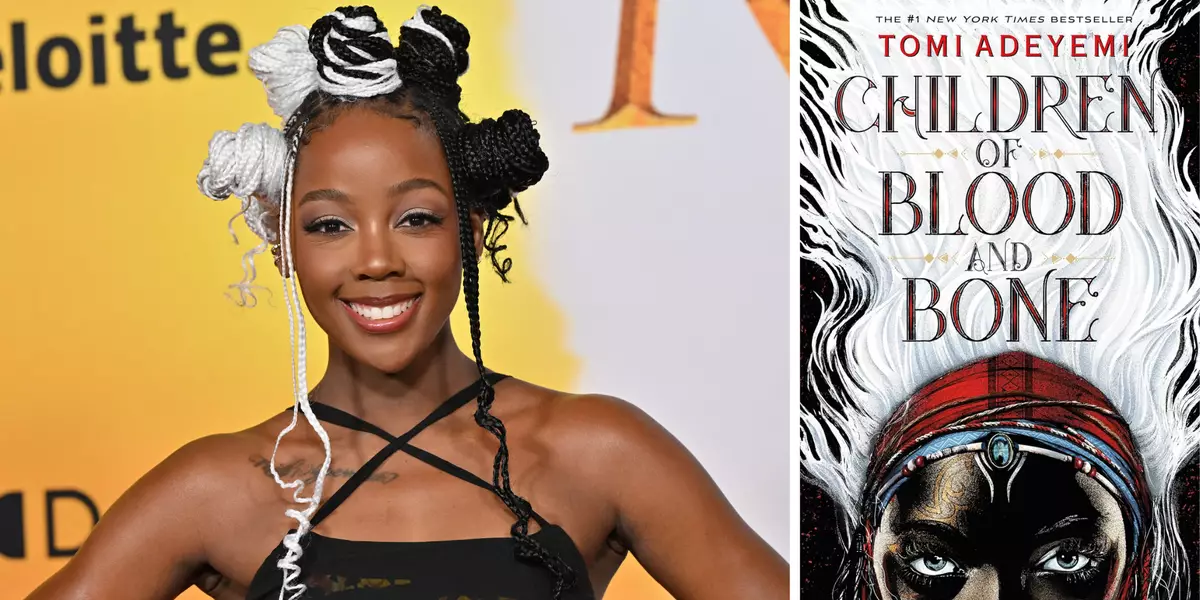Tomi Adeyemi’s “Children of Blood and Bone” has captivated the hearts of readers with its vibrant storytelling and lush world-building. This young adult (YA) fantasy novel, which blends themes from West African culture with timeless narratives of magic and resilience, is finally making its long-awaited leap to the silver screen. With Paramount Pictures at the helm of the adaptation, the film promises to breathe life into Adeyemi’s eerie yet enchanting world of Orïsha. The fact that a YA novel featuring characters inspired by African mythology is being turned into a film is already a significant moment in cinematic history. This is not just about adaptation; it’s about representation and the opportunities that come with it.
A Complex Yet Relatable Narrative
At the heart of the story lies Zélie Adebola, a fierce warrior navigating a society that has systematically oppressed her people and stripped away their magic. Adeyemi’s rich narrative encapsulates the struggles for identity and belonging while tackling broader sociopolitical themes such as colonialism, systemic racism, and the quest for liberation. Zélie, alongside her brother Tzain, and the royal siblings Amari and Inan, embarks on a journey of self-discovery and resistance against an unjust monarchy. Their multifaceted relationships reflect the complexities of familial ties and alliances forged under oppression. What resonates deeply is the relatability of these characters; they embody flaws and strengths that mirror our own lives, making their quest for magic—and by extension, freedom—a universal struggle.
The Power of a Strong Creative Team
Paramount Pictures’ decision to involve Tomi Adeyemi in the production speaks volumes about their commitment to authenticity. Adeyemi’s role as co-writer and executive producer ensures that the film will stay true to the spirit of the original story. Collaborating with Gina Prince-Bythewood—an accomplished director known for powerful narratives centered on women—sets the stage for a film that prioritizes both character development and visual elegance. Both women have a shared vision of uplifting stories that center around women of color, which allows for the creation of layered characters and nuanced depictions of struggle and triumph. Prince-Bythewood’s hands-on approach, combined with Adeyemi’s profound connection to the source material, enhances the film’s potential to become a hallmark of contemporary cinema.
Stellar Casting: A Reflection of Uniqueness
The casting choices for “Children of Blood and Bone” are nothing short of inspiring. With actors like Thuso Mbedu, Amandla Stenberg, and Damson Idris taking on pivotal roles, audiences can look forward to performances that bring depth and authenticity to these beloved characters. Mbedu’s acclaimed portrayal in “The Woman King” is merely a glimpse of what she brings to Zélie, promising a rendition that captures both strength and vulnerability. Furthermore, the inclusion of powerhouse actors like Viola Davis and Chiwetel Ejiofor solidifies the film’s stature as one that won’t shy away from the emotional weight of its themes. Alongside a diverse array of talents, the film showcases a rich tapestry of performance that reflects the diversity of its source material.
High Hopes and Readiness for Impact
While the film is slated for release in January 2027, the buildup has already generated significant buzz within both literary and cinematic communities. The collective anticipation feels palpable—for many, it is more than just a film; it’s a cultural milestone laden with expectations around how it will portray its themes and characters. As trailers and sneak peeks roll out in the upcoming years, fans will scrutinize every detail, eager to see how well the film encapsulates the essence of a novel that resonates with so many. Expectations are high, and rightly so; this adaptation has the potential to redefine the portrayal of fantasy narratives within mainstream cinema.
The journey of “Children of Blood and Bone” from page to screen symbolizes not just an adaptation but an artful reckoning of identity, power, and humanity, reflecting the aspirations of a generation advocating for more diverse and strong voices in storytelling. As we await the film, it’s crucial to embrace this momentum, fueling the conversation on the importance of representation and multifaceted narratives in the world of cinema.

